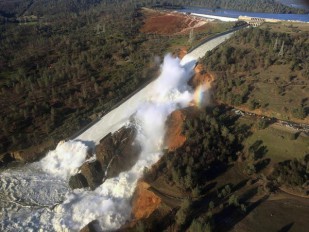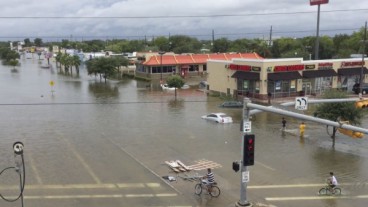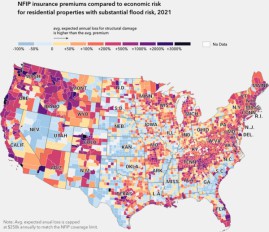Evaluating the impact of urban development on flood risk

According to a new study, urban development may cause severe issues when it comes to flooding risk.
The study, recently published in Geophysical Research Letters, was conducted by scientists from the Johns Hopkins University and the United States Geological Survey (USGS). It suggests that for 1% impervious pavement development (e.g. roads and parking lots), the average flood incidents per year will rise by 3.3%.
The impact of urban development on the potential flood flows has been studied before but, most attempts focus on a small amount of data and could not derive an actual correlation between the 2. Other parameters such as the climate, the usage of land or the existence of nearby dams affect the results, therefore, a single case study is not suitable for determining an actual correlation.
Nevertheless, researchers managed to address this issue and assess the impact of impervious surfaces on the rate of flooding increase. For this purpose, they gathered and analyzed data from 1974 to 2012 that included water flowing information of more than 2,100 streamgaging stations provided by the USGS. Then, they evaluated the urban growth of the basins located upstream of the stations. "Due to the large variability in annual flooding, it is difficult to isolate the effect of urbanization. Combining these large datasets with both time and space dimensions allowed us to tease out and calculate the magnitude of the effect," Dr. Annalise Blum, lead-author of the study and a postdoctoral fellow at the Department of Earth and Planetary Sciences, Johns Hopkins University, said.
The team incorporated complex mathematical models to analyze the data and derive reliable results that have not been widely used in the study of flood flows. According to Dr. Paul J. Ferraro, co-author of the study and a Bloomberg Distinguished Professor of Human Behavior and Public Policy at Johns Hopkins University, deriving the most suitable model to determine the cause and effect correlation is of great importance. "...in the last few decades, fields like economics and biostatistics have made great advances in methods that can isolate cause and effect. By bringing these methods to hydrology, we hope that we can spur advances in hydrological science, as well as in the urban policies and programs that depend on that science," Prof. Ferraro, stated.
Researchers aim at applying their method in future urban development planning. Acknowledging the large impact of impervious surfaces on flooding may be an inhibitory factor towards improvident urban development or, at least, it could drive designers to search for more intelligent solutions. For example, according to the results of the study, if an intact river basin is urbanized and impervious surfaces reach 20% of the total area, the annual flooding will experience a 66% increase.
Source: Johns Hopkins University
Source: Johns Hopkins University
Want to read more like this story?

New study explains how global warming significantly increases the size of floods
Feb, 03, 2020 | NewsAccording to new research evidence, warming environment leads to more rainfalls and less snow accumu...

Urban floods: A major issue in the U.S.
Dec, 10, 2018 | NewsFloods triggered by intense storms cause major problems in urban environments. New research (full...

Elevating houses to address flood risks: A detailed analysis
Oct, 26, 2020 | NewsElevating structures is a method that is widely utilized (especially in the United States) to tackle...

Different urbanization patterns in large cities worldwide
Oct, 23, 2020 | NewsA new study reveals dissimilar urbanization patterns in large cities all over the world during the p...

How to reduce temperature in urban environments
Jul, 29, 2019 | NewsA new study conducted by the Portland State examines how vegetation and reflective materials can low...

The Devastating Impact and Solutions to Flooding in Brazil
May, 20, 2024 | NewsThe recent catastrophic flooding in Rio Grande do Sul, Brazil, has brought widespread devastation a...

Flood risk increase for US infrastructure due to climate change: Insurance rates tend to underestimate the current conditions
Mar, 01, 2021 | NewsThe risk of flooding can cause severe damage to infrastructure. New evidence revealed that the poten...

Impact of roadway infrastructure on human life risk
Oct, 25, 2019 | NewsA new study, published in Journal Accident Analysis & Prevention, focuses on the impact of roadw...

Study of future coastal flooding impact on river delta populations
Oct, 09, 2020 | NewsA new study evaluates the impact of coastal flooding caused by climate change on human population....
Trending

Vertical gardens in Mexico City to combat pollution

Saudi Park Closed After 360 Big Pendulum Ride Crashes to Ground, 23 injured

Characteristics of Load Bearing Masonry Construction

Taipei 101’s impressive tuned mass damper

Dutch greenhouses have revolutionized modern farming

Federal court rules Biden’s offshore drilling ban unlawful


